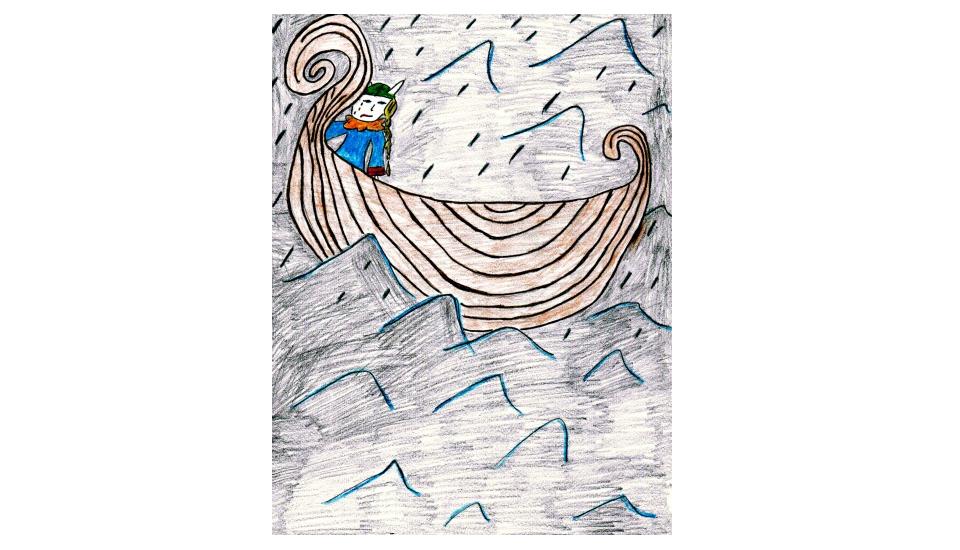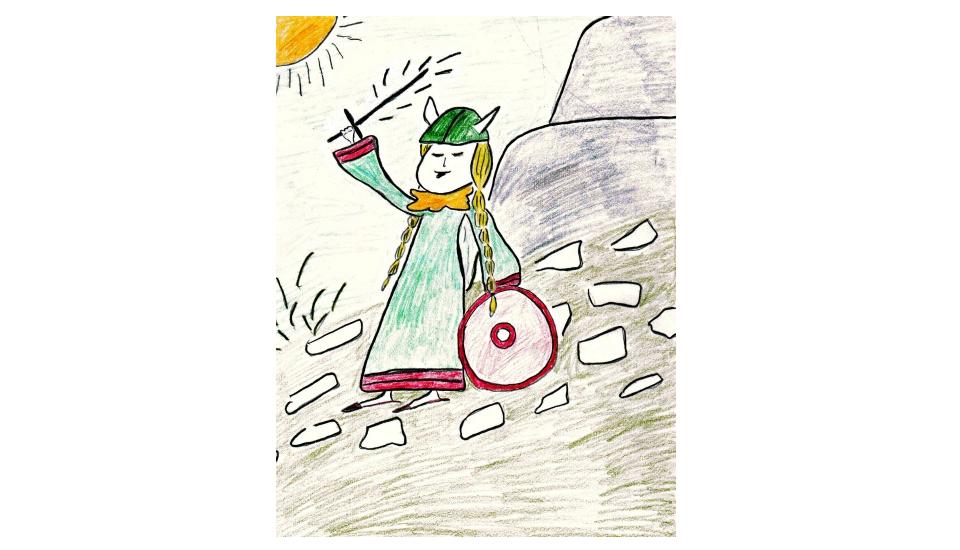Today’s Hermipedia Feature: Viking Ship
Viking set sail, leaving her village in the dark, stormy night on her Viking Ship. She didn’t know where she was going, except away, and sailed many days and nights before seeing a lone island in the distance.
There were many times repeated on the sea in her Viking Ship, as if she sailed in circles. It was after the worst stormy night, when she thought she may perish into the tossing waves, that the sun appeared, and she caught a glimpse of Hermit Island on the horizon.
Thanks to her sturdy Viking Ship with overlapping planks of flexible wood, and a single spine or keel foundation, she survived to see her refuge over the wave caps in the distance, before taking on too much water.
Types of Viking Ships
Viking ships came in various sizes, and were used for different functions. For example, a Karve was a smaller type of Viking ship that was used for human or livestock transport, and could handle very shallow depths. Other types of ships were Knarr, Faering and Longships used by the Vikings.
Viking Ships: Longship Construction
Viking’s ship was called a longship that is designed for speed, exploration and warfare for Vikings, and can even land on beaches. It is double-ended, so that it can change directions easily, and travel both directions without turning the boat.
The overlapping split-oak planks are just one inch thick, and are stronger than any sawed plank of wood. They form layered ribs riveted together, that make the hull of the ship both strong and supple.
Ship Navigation for Vikings
Vikings were very precise in their navigation, and knew the tides, landmarks and sailing routes well. They used routes passed down from ancestors, and could even spot the position of a whale in the water, to know the proper direction and navigation of their Viking ships.

